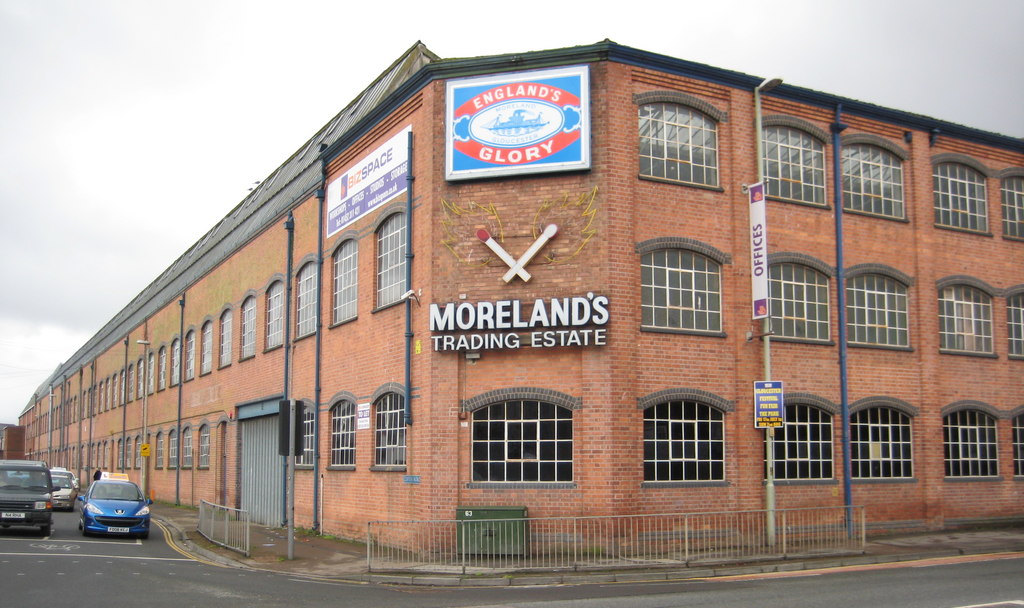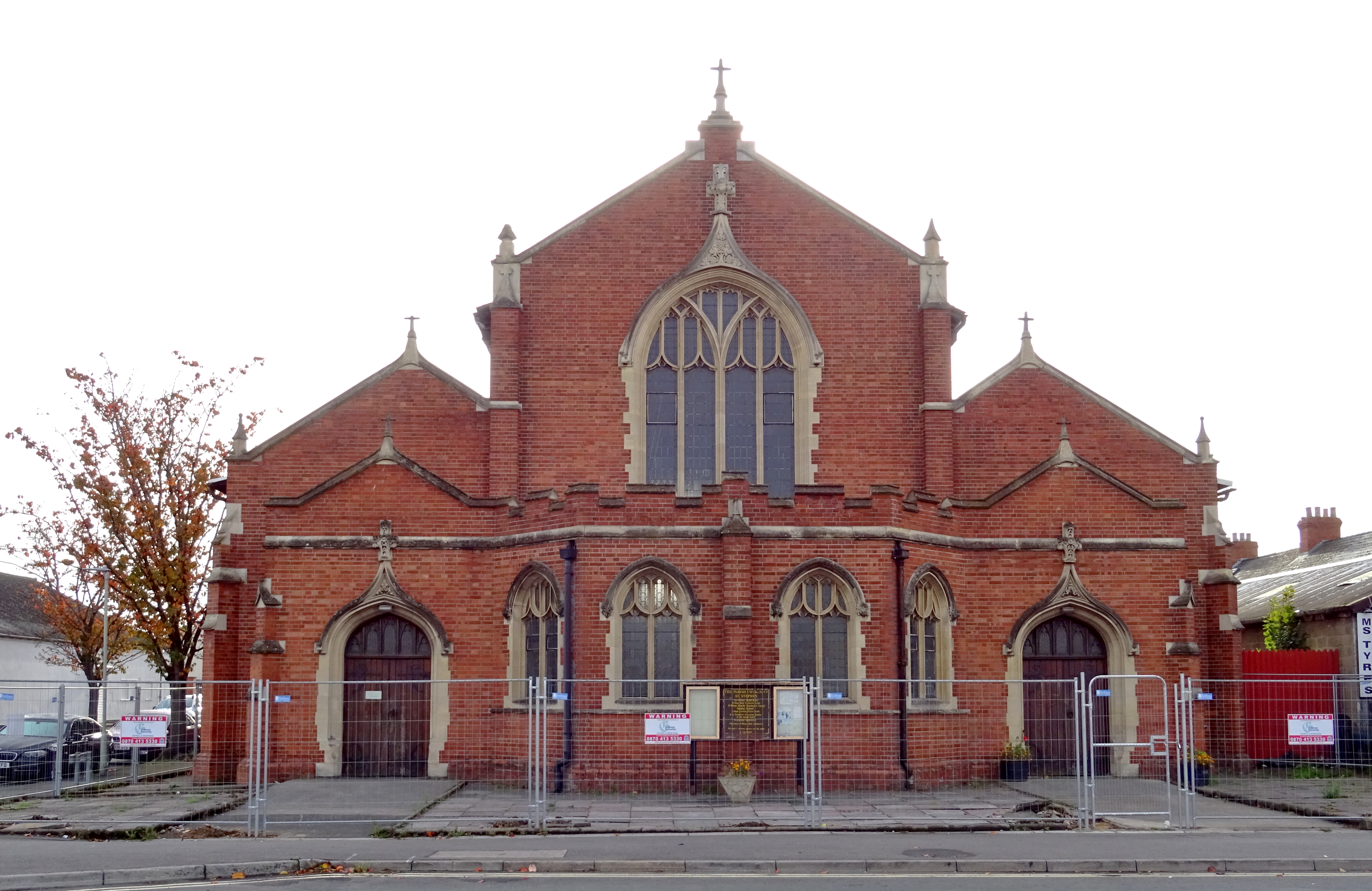|
Bristol Road
Bristol Road in the City of Gloucester dates from the medieval period. It runs between Southgate Street in the north and Quedgeley in the south where it joins the Bath Road and the A38 road, A38. It contains a number of listed buildings and other notable structures. History Bristol Road was one of the significant roads into the City of Gloucester from the medieval period, joining it to the City of Bristol. Later, as Gloucester expanded, the northernmost part of Bristol Road became known as lower Southgate Street. Listed buildings and structures Listed buildings and structures in Bristol Road, north to south, are: * Norfolk Buildings, designed by Thomas Fulljames, 1836. * Gloucester & Sharpness Canal Milepost * The Little Thatch, 14th-century timber-framed house. * Forge Thatch Cottage, 17th-century timber-framed house. * Milestone, 19th-century, iron. * Packers Cottage, Quedgeley. * Laura Croft, 17th-century timber-framed house. * Milestone, 19th-century, iron. * Lodge to Hardw ... [...More Info...] [...Related Items...] OR: [Wikipedia] [Google] [Baidu] |
Thomas Fulljames
Thomas Fulljames FRIBA (4 March 1808 – 24 April 1874) was an architect active in Gloucestershire Gloucestershire ( abbreviated Glos) is a county in South West England. The county comprises part of the Cotswold Hills, part of the flat fertile valley of the River Severn and the entire Forest of Dean. The county town is the city of Gl ..., England, in the first half of the nineteenth century. As diocesan surveyor from 1832 until 1870, latterly in partnership with Frederick Sandham Waller, he designed, reconstructed or extended a number of churches in Gloucestershire. He is known for designing the former psychiatric asylum at Denbighshire (1842-1844) in Jacobean style and the Gloucester Court of Probate (1858) in the Gothic style. He also designed a barrage across the River Severn, which was never built. He built Foscombe house for his own use in Ashleworth, Gloucestershire, which has been classified as a grade II* heritage building. Early life and family Thomas ... [...More Info...] [...Related Items...] OR: [Wikipedia] [Google] [Baidu] |
High Orchard
High Orchard was an industrial area of the city of Gloucester in England that was developed in the 19th century on the former orchard of the Priory of Llanthony Secunda (1136). The area was closely associated with Gloucester Docks immediately to the north, and served by the Gloucester and Sharpness Canal and railway transport. It was the site of Fielding & Platt's Atlas Works and a number of other significant local employers. It was centred on High Orchard Street which ran between Llanthony Road to the north and Baker Street to the south. To the west was Baker's Quay and to the east Southgate Street. Immediately south of Baker Street was the terminus of the High Orchard branch railway line. Most of the area is now the site of the Gloucester Quays shopping centre and associated buildings, with some original buildings surviving as part of the shopping centre and along the canal side. Early history High Orchard was sited on the former orchard of the Priory of Llanthony Secunda,< ... [...More Info...] [...Related Items...] OR: [Wikipedia] [Google] [Baidu] |
St Paul And St Stephen's Church, Gloucester
St Paul and St Stephen's Church is a Church of England church located in Stroud Road, Gloucester, Gloucestershire. St Paul's church was built between 1882 and 1883. St Stephen's church was built between 1898 and 1900. St Stephen's church was closed in 2010 and the church was merged with St Paul's which became St Paul and St Stephen's church. Closely associated with the church is St Paul's Church of England Primary school located in New Street, Gloucester which opened in 1870. History St Paul The building was constructed in 1882 by Alfred King with Capel Tripp being the architect. The church was consecrated for use on 11 October 1883 by the Bishop of Gloucester. It was built to serve the expanding population but also as a memorial to Robert Raikes on the 100th anniversary of the 1780 Sunday school movement. It was funded by a grant from the Incorporated Church Building Society and donations including a large gift from D.H.D Burr. In total around £6,500 was raised, although this ... [...More Info...] [...Related Items...] OR: [Wikipedia] [Google] [Baidu] |
England's Glory
England's Glory is a brand of non-safety matches, available in the United Kingdom, using a celebrated image of a Victorian battleship, HMS Devastation. History The product was originally made in the still-standing 'Moreland's Match Manufactory' in Bristol Road, Gloucester by S.J. Moreland and Sons, who became a subsidiary of Bryant and May in 1913, although full ownership by Bryant and May only came in 1938.Beaver, Patrick (1985). ''The Match Makers: The Story of Bryant & May''. London: Henry Melland Limited. . Consolidation of match production within Great Britain led to Bryant and May's matches being made at Garston in Liverpool, London and Glasgow. ''England's Glory'' then became a brand for matches made at Bryant and May's Garston factory which were sold mainly in the North of England and the Midlands. The matches made in Glasgow were marketed in Scotland as ''Scottish Bluebell'' matches. Bryant and May themselves ceased to exist in the 1980s, but ''England's Glory'' and ' ... [...More Info...] [...Related Items...] OR: [Wikipedia] [Google] [Baidu] |
Gloucester Railway Carriage And Wagon Company
Gloucester Railway Carriage and Wagon Company (GRC&W) was a railway rolling stock manufacturer based in Gloucester, England from 1860 until 1986. Products included goods wagons, passenger coaches, diesel multiple units, electric multiple units and various special-purpose vehicles. The company supplied the original fleet of red trains for the Toronto Subway, which were based upon similar vehicles to the London Underground. The company also produced pivoting sections for the Mulberry Harbour for the British War Office 1944. 19th century The company was formed at a meeting of 30 January 1860 with an initial capital of £100,000 in 10,000 shares of £10 each. The first general manager was Isaac Slater. A works was established in 1860, producing over 300 wagons in the first year. Through the latter part of the 19th century, the company manufactured wagons and carriages. In 1887 it was renamed the ''Gloucester Railway Carriage and Wagon Company'' from the ''Gloucester Wagon Compan ... [...More Info...] [...Related Items...] OR: [Wikipedia] [Google] [Baidu] |
Hardwicke, Stroud
Hardwicke is a large village on the A38 road 7 km south of the city of Gloucester, Gloucestershire, England. Despite its proximity to Gloucester, the village comes under Stroud Council. The population of the village taken at the United Kingdom Census 2011 was 3,901. With its name deriving from the Old English , "herd endingsettlement", farming is still the major industry of the parish. Hardwicke was once renowned for its cider and cheese, this may have led to its survival during the battle for Gloucester in the Civil War – neither side wanted to damage a source of much appreciated sustenance. Though there is a typical village green and pond on Green Lane, along with some of the village's oldest cottages, there was never a distinct centre to the village and other parts have a distinct "Victorian" feel. Added to this are the newer developments of the 1970s and 1980s, which have gradually become contiguous with the Quedgeley district of Gloucester to the north. The village ... [...More Info...] [...Related Items...] OR: [Wikipedia] [Google] [Baidu] |
Hardwicke Court
Hardwicke Court is a Grade II* listed country house in Hardwicke, Gloucestershire, England. The house is Late Georgian in style. It was designed by Sir Robert Smirke and built in 1816–17, although a canal still remains from the early 18th-century gardens of the Trye family. Hardwicke Court was built for Thomas John Lloyd Baker (sometimes written Lloyd-Baker), widower of Mary Sharp. A bust of Sharp's uncle, abolitionist Granville Sharp Granville Sharp (10 November 1735 – 6 July 1813) was one of the first British campaigners for the abolition of the slave trade. He also involved himself in trying to correct other social injustices. Sharp formulated the plan to settle black ..., is on display at the house. The house and gardens are occasionally open to the public in the summer, and the Lloyd Baker family still resides there. References Country houses in Gloucestershire Houses completed in 1817 Grade II* listed houses in Gloucestershire Georgian archite ... [...More Info...] [...Related Items...] OR: [Wikipedia] [Google] [Baidu] |
The Little Thatch
The Little Thatch (also known as The Thatch Inn) is a 14th-century timber-framed building at 141 Bristol Road, Quedgeley, Gloucester. It is now used as a public house and hotel. History The buildings were built in 1351, both having thatched roofs, and were known as Queen Anne's Farm and Read's Farm. In 1535, it is rumoured Anne Boleyn stayed here when Henry VIII and herself passed through Quedgeley. It was extended in the 19th and 20th century, then since 1967 it has been used as a public house and hotel. From 1970, the Inn was operated by Jacky McDougall. The building was Grade II listed on 30 September 1985. In 2015, The Hotel Inspector filmed in the Little Thatch to help the former owner. In 2018, the Inn was sold to the Hatton Collection for £800,000. Architecture Originally built as two separate single storey semi-detached houses, it consisted of a timber-frame in-filled with brick, a brick chimney and a thatched roof. Later, expansion work added a second storey and the t ... [...More Info...] [...Related Items...] OR: [Wikipedia] [Google] [Baidu] |
Norfolk Buildings
Norfolk Buildings is a terrace of grade II listed houses at 73-91 Bristol Road, Gloucester, on the east side between Theresa Street and Alma Place. The buildings were begun in 1836 to a design by the architect Thomas Fulljames in the Greek Revival style for the reverend Samuel Lysons of nearby Hempsted Court. It was originally known as Theresa Place. In 1829 they were described by the local writer George Worrall Counsel as "a very handsome row of elegant houses". The north end of the terrace was the Norfolk House Hotel but is now The Linden Tree pub under the management of Wadworth Brewery Wadworth is a brewery company founded in 1875 in Devizes, Wiltshire, England, best known for their 6X beer brand. History Wadworth & Co. was founded in 1875 when Henry Wadworth purchased the Northgate Brewery in Devizes. It was not long before .... [...More Info...] [...Related Items...] OR: [Wikipedia] [Google] [Baidu] |
Bristol Road North, Gloucester
Bristol () is a city, ceremonial county and unitary authority in England. Situated on the River Avon, it is bordered by the ceremonial counties of Gloucestershire to the north and Somerset to the south. Bristol is the most populous city in South West England. The wider Bristol Built-up Area is the eleventh most populous urban area in the United Kingdom. Iron Age hillforts and Roman villas were built near the confluence of the rivers Frome and Avon. Around the beginning of the 11th century, the settlement was known as (Old English: 'the place at the bridge'). Bristol received a royal charter in 1155 and was historically divided between Gloucestershire and Somerset until 1373 when it became a county corporate. From the 13th to the 18th century, Bristol was among the top three English cities, after London, in tax receipts. A major port, Bristol was a starting place for early voyages of exploration to the New World. On a ship out of Bristol in 1497, John Cabot, a Venetian, be ... [...More Info...] [...Related Items...] OR: [Wikipedia] [Google] [Baidu] |





